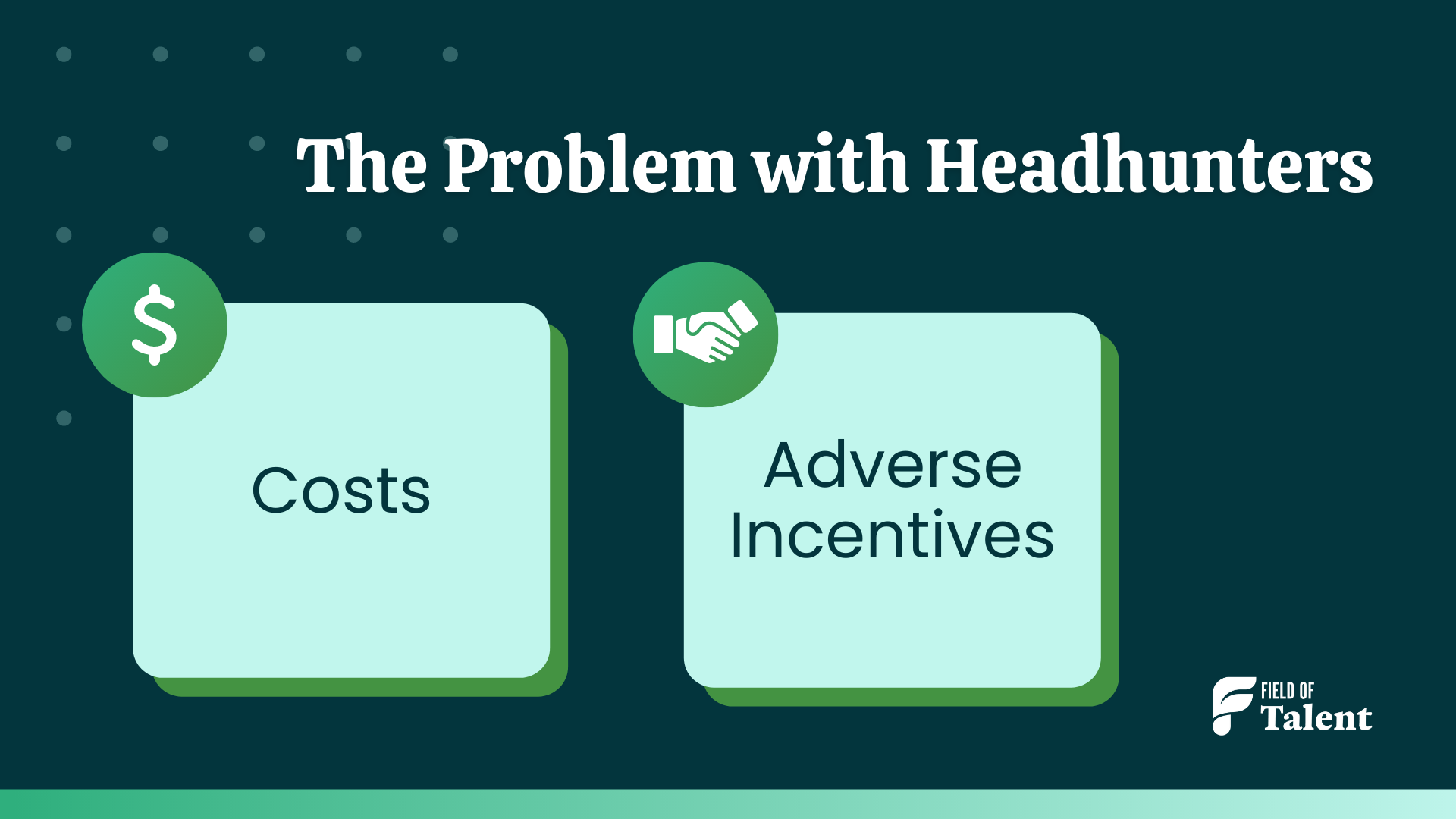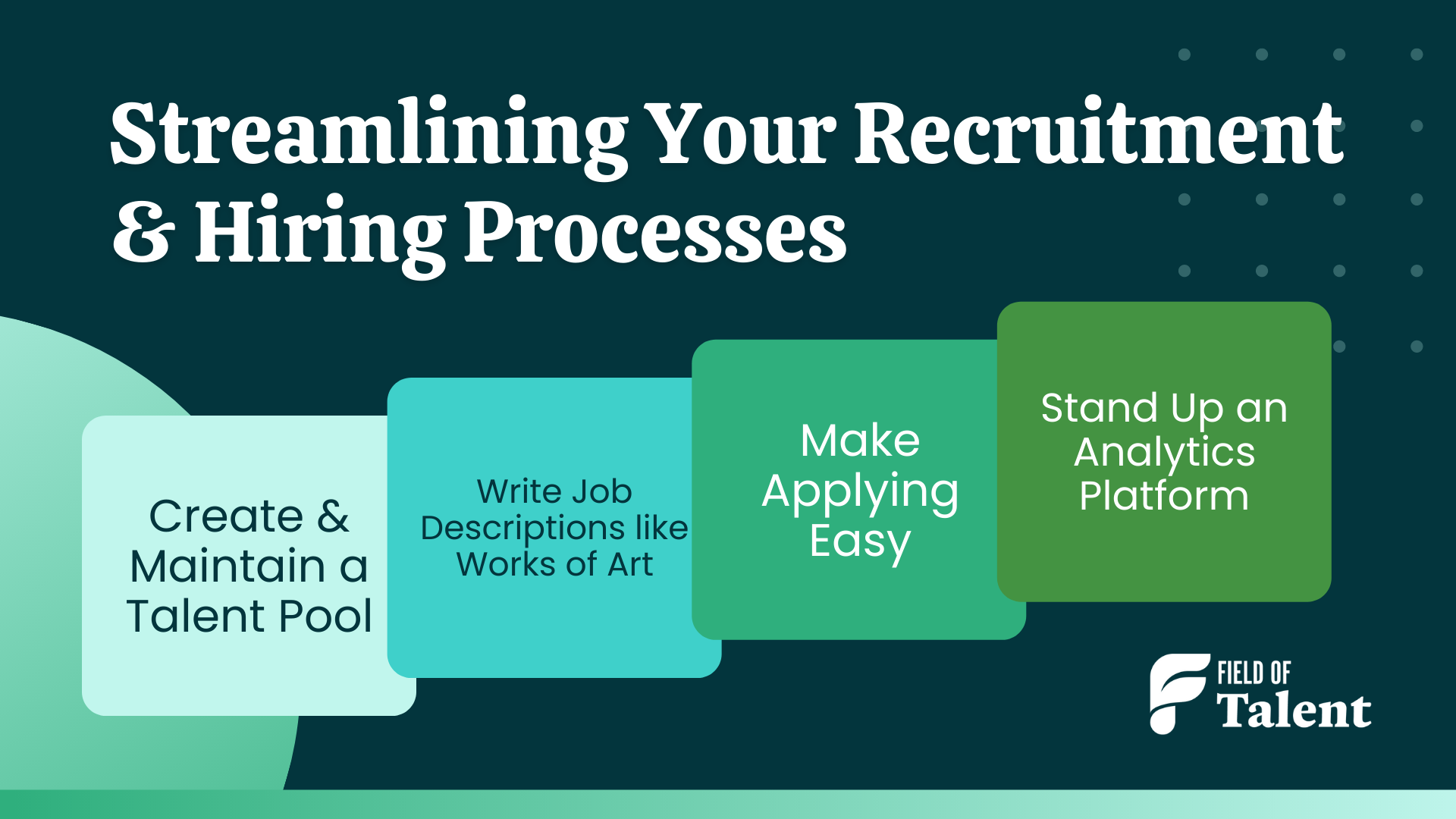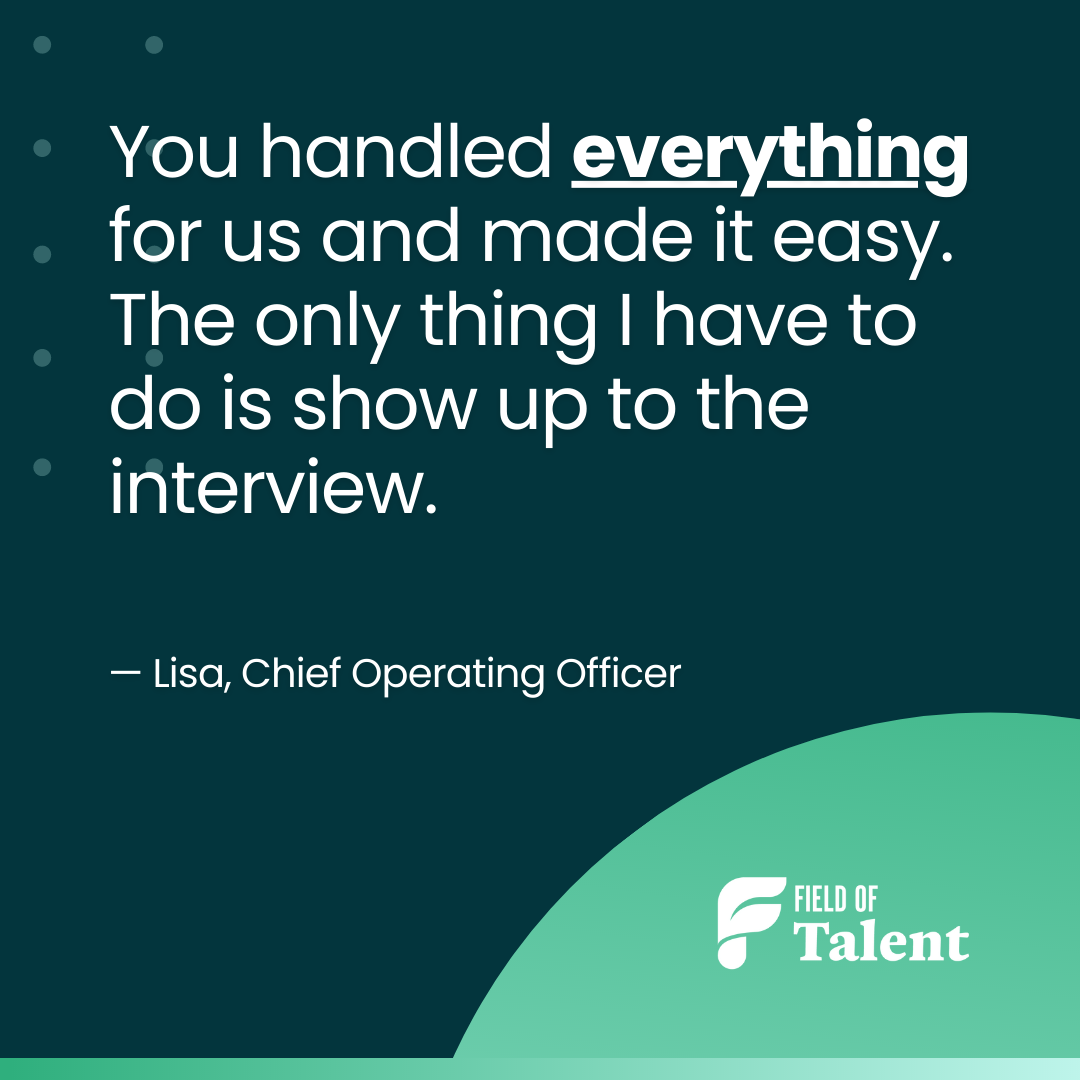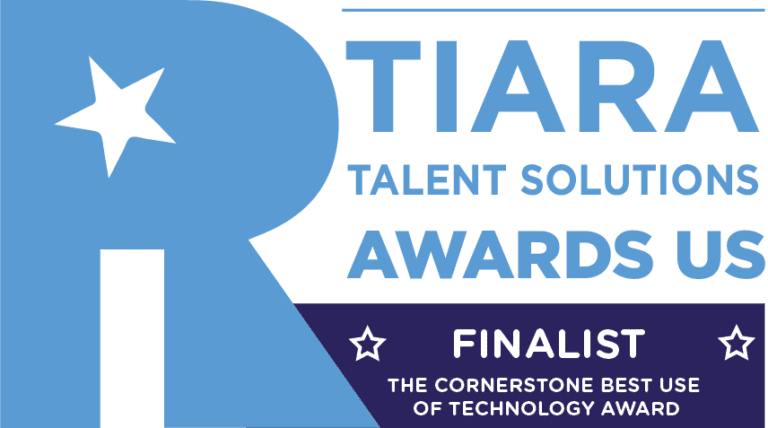According to SHRM, each new hire your organization makes costs around $4,425 (Zippia) and can range up to five figures. In recruitment costs. In lost time and revenue. Recruitment and hiring are expensive.
And add the cost of hiring the wrong person. If you don’t have enough candidates in the top of your funnel, you likely won’t be getting the best talent possible at the end of your recruitment process.
So, it makes sense that you’re here – learning how to implement cost-effective recruitment strategies and save your organization time and money.
Saving money in your recruitment and hiring processes isn’t just about reducing agency spend. You also want to optimize your HR processes over the long-run without jeopardizing your employer brand and visibility.
Focus your energy and resources on streamlining your recruitment, hiring and overall HR systems. And, get the top draft picks you deserve – faster, easier and more affordably.
The Problem with Headhunters
Headhunters help organizations find great talent by going beyond their traditional recruitment strategies. Instead of simply posting your open jobs on your website or job board and hoping you get applicants, headhunters focus on reaching out to passive candidates – often one at a time. This can be slow and expensive.
The other problem inherent with headhunters (contingency and retainer recruitment agencies) is the way they make their money – a share of your candidate’s first year salary. Effectively causing recruiters to cut corners with candidates’ careers and vie for quick placements.
We firmly believe that a candidate’s career should never be about their recruiter’s fee.

Costs of headhunters
Headhunters are expensive. Sure, they get you what you need – great candidates. But at what cost? Usually 20-25% but sometimes as high as 50% of that eventual hire’s first year salary.
And when you look at traditional alternatives like job boards and other ways of getting the word out about your open positions, you still must pay hundreds of dollars per ad or posting.
Recruitment has gotten expensive. And even more so for top talent.
But that’s not all.
Adverse incentives
In their most common business model (called a ‘contingency model’), headhunters get a cut of their placements’ first-year salaries. So, they’re rewarded more when they place candidates with high-paying salaries versus candidates with lower salaries or wages.
Although your company’s open positions need to be filled, headhunters are adversely incentivized to fill their higher paying jobs first and foremost. Despite your organization’s recruitment and growth goals.
Yes, there are alternatives to headhunters. And yes, you can get equal or even better results by pursuing a different strategy to hire top talent for your organization.
Streamline your recruitment & hiring processes
You can use your HR budget and strategic measures to reduce recruitment costs. It’s been done. No need to divert huge amounts of resources. Many of the steps below don’t require a ton of upfront investment. But, they do require focus and dedicated work.
Your transition from reactive to proactive recruitment and hiring won’t happen over night. But with time, structure and diligence, your recruiters and HR staff will shift from anxious and under pressure to confident and empowered.

Step 1: Create & maintain a talent pool
Just because you go with another candidate for an open position doesn’t mean you have to sever ties with the others. If you were between a few rockstars at the end of a process, maintain those relationships. Add them to a database you can address when you inevitably have openings in the future. Here’s to more growth!
“We’ll keep you in mind for future roles” shouldn’t be lip service after rejection. Mean it! If you have an applicant tracking system (ATS) in place, use it to your advantage and organize your talent pool.
In addition to candidates to whom you didn’t offer a job, consider your company’s alumni. Similar to your current employees, they know your company like the back of their hand – even if your culture and team have changed since they left. Reach out when you have an opening. You may find you have a candidate that requires extremely little training and onboarding resources.
Step 2: Write job descriptions like works of art
Job postings are 100x more important than most recruiters and HR professionals think they are. If your descriptions read like they’re written by HR, chances are you have a boring job description.
Candidates don’t want to read a long bulleted list or suffer a slow death by bullet points. What they do want is to see themselves in the job, doing it, being successful, enjoying it, advancing from it, and thriving in their career with your company. Write your job descriptions in a way that paints a picture for your audience and you’ll be sure to attract top performers.
Using keywords in your job titles is important for search results. Put yourself in the shoes of your optimal candidate. What are they searching on Google to find your position or similar positions at your competitors? Using keywords is crucial for search engine optimization and appearing atop the search engine result pages when your candidates search for new jobs.
But, don’t get too fancy with titles. Job boards like Indeed.com don’t like quirky names. If you do try something unusual to attract attention, it may backfire and push your job down in the search rankings where candidates likely won’t see it. If your organization really encourages creative titles, allow your new hires to invent their own title after they’ve been hired.
In your requirements, don’t be too specific so as to disqualify many of your candidates. Do your candidates really need a Masters degree for this position? Also, don’t pick too many. Your candidates should understand the gist from the most important requirements.
The body of your job posting should reflect your organization’s culture, brand and mission. Recruitment and hiring aren’t only about screening candidates to work for your organization: You want to put your best foot forward and make sure that candidates like your company and people for who you are. Providing a link to your company’s mission and story is a great way to introduce yourself. Bonus points if it’s in video form!
You don’t necessarily have to write a novel in your job description. But, provide enough detail to stoke a fire under candidates’ butts. “Heck yeah, this sounds awesome! I want to work here.”
Whether your job descriptions live on your website or on a job board, these principles apply.
Step 3: Make applying easy
Make it easy for your candidates to apply. This means dusting off the cob webs of your website’s careers page and portal. In 2022 and beyond, Millennials and Gen Zers expect the utmost from your candidate experience – both the application and interview process.
How do they want to be interacted with? Probably over text. How many questions do they prefer to answer in order to apply? Probably not a billion.
Reducing the barrier to apply – both mentally and physically – guarantees a fuller pipeline of candidates. Do not make application as difficult as possible just for prestige’s purpose.
In today’s modern internet age, your career portal should be friendly, user-friendly and informative. Attract tech-forward talent by being tech-forward yourself.
Step 4: Stand up an analytics platform
Following the above steps will put you a leg and arm ahead of your competition. But, add analytics to the equation? And, wow. Your organization will be that much stronger.
“What gets measured gets managed,” Peter Drucker once said. And how true it is. Without data points to compare and measure success, you’re merely shooting in the dark.
Now, don’t mistake this step as investing in a robust recruitment analytics platform that you’ll never understand or use. Start with the basics. Right now, you should be tracking your recruitment pipeline on an Excel sheet at the very least. Over time, as you spend more time looking at the data, you’ll determine what’s important to your organization.
Where do you lose the most talent in the hiring process? Or, where does it seem to bog down? Optimize that step and reduce friction for your candidates. Thus guaranteeing more top talent at the bottom of your funnel.
Continue to look at the data over time to see where you can streamline communication with your candidates. Reduce any unnecessary touchpoints in order to move a candidate forward in the hiring process. Optimize ad spend and candidate flow from ads. The world of recruitment data is boundless.
Again, what you measure, you’ll manage. The best time to start tracking and analyzing your recruitment data was yesterday.
By no means is this step-by-step guide exhaustive to solve all your recruitment and hiring problems. But, it’s a great start to reduce today’s obstacles and address tomorrow’s.
HR process optimization will save you time, money and resources. And, get you the candidates your team wants and deserves.
Hire Field of Talent
Field of Talent has over 100 years of recruitment and hiring experience. We’ve helped organizations like yours scale their recruitment processes alongside their growing companies. Putting in place smooth, streamlined HR processes to help even the most disorganized teams excel.
Hire better and faster. More affordably and easily. Get the top draft picks you deserve.
By speeding up your recruitment process and handling all candidate communications, Field of Talent can help you get 10x more candidates in your pipeline – a difference-maker when it comes to hiring.
Furthermore, retention is the best way to save money in your recruitment and hiring processes. Field of Talent ensures you hire the best talent that’s invested in your organization’s growth.
Are you ready to upgrade your organization? Get your free consultation with the Field of Talent team here.

By dropping your expensive headhunters and focusing on building a streamlined recruitment pipeline internally, you can save tons of money and time. Sure, recruitment costs will persist with software investments and ad spend. But, in upgrades to your analytics, recruitment communications and employer brand, you’ll start to see ROI in the form of better talent retained for longer.


